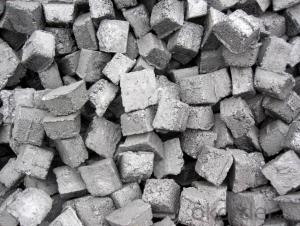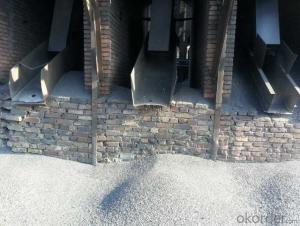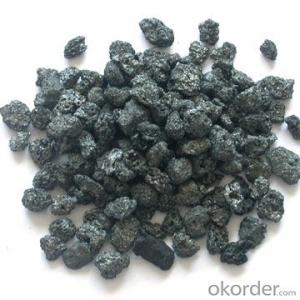FC 93% Calcined Anthracite
- Loading Port:
- China Main Port
- Payment Terms:
- TT or LC
- Min Order Qty:
- 20 m.t.
- Supply Capability:
- 1000 m.t./month
OKorder Service Pledge
OKorder Financial Service
You Might Also Like
FC 93% Calcined Anthracite
It used the high quality anthracite as raw materials through high temperature calcined at over 2000 by the DC electric calciner with results in eliminating the moisture and volatile matter from anthracite efficiently, improving the density and the electric conductivity and strengthening the mechanical strength and anti-oxidation.
It has good characteristics with low ash, low resistvity, low sulphur, high carbon and high density. It is the best material for high quality carbon products.
Product Uses
Calcined Anthracite Coal may substitute massively refinery coke or graphite. Meanwhile its cost is much less than the refinery coke and graphite. Carbon Additive is mainly used in electric steel ovens, water filtering, rust removal in shipbuilding and production of carbon material.
Calcined Anthracite
Fixed carbon: 90%-95%
S: 0.5% max
Size: 0-3. 3-5.3-15 or as request
General Specification of Calcined Anthracite:
PARAMETER UNIT GUARANTEE VALUE | |||||
F.C.% | 95MIN | 94MIN | 93MIN | 92MIN | 90MIN |
ASH % | 4MAX | 5MAX | 6MAX | 7MAX | 8MAX |
V.M.% | 1 MAX | 1MAX | 1.5MAX | 1.5MAX | 1.5MAX |
SULFUR % | 0.5MAX | 0.5MAX | 0.5MAX | 0.5MAX | 0.5MAX |
MOISTURE % | 0.5MAX | 0.5MAX | 0.5MAX | 0.5MAX | 0.5MAX |
Size can be adjusted based on buyer's request.
Pictures of Calcined Anthracite:

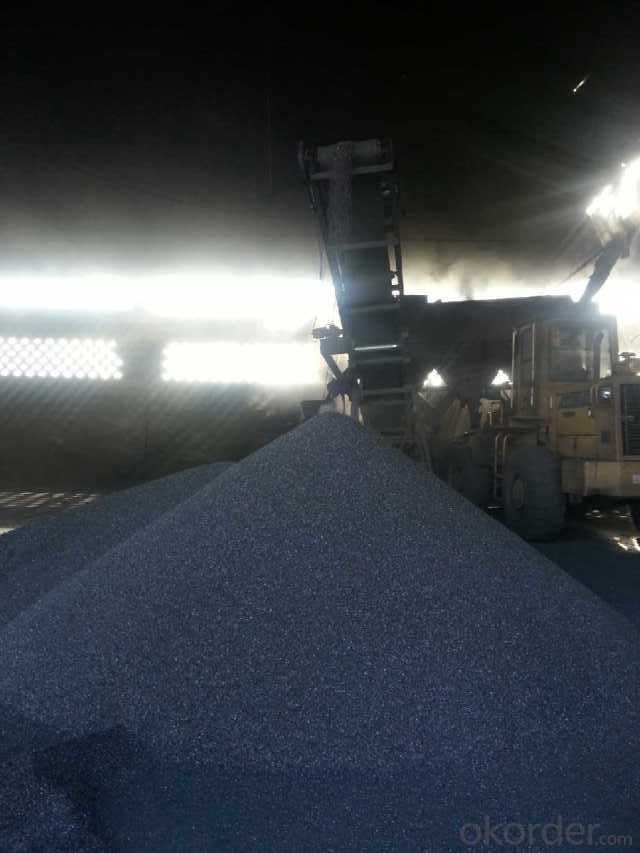
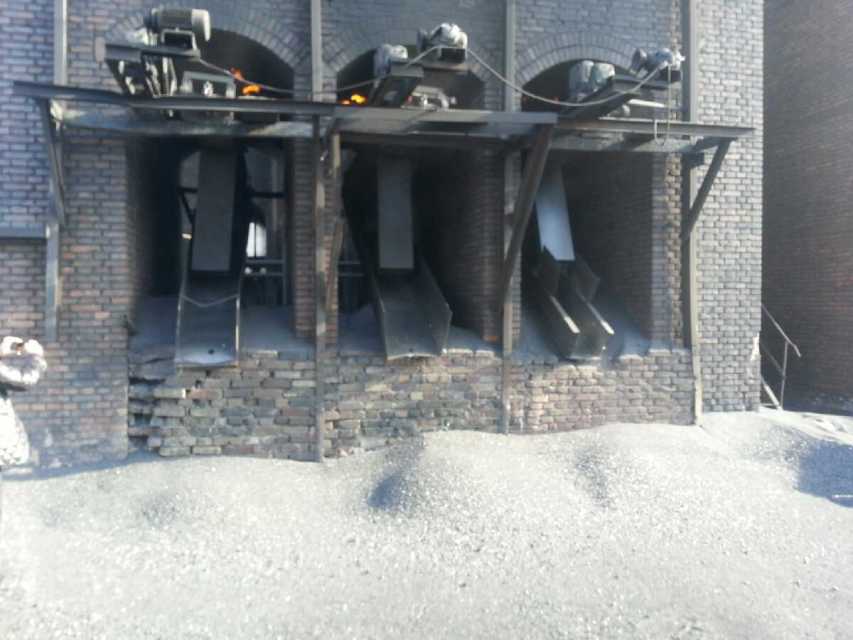
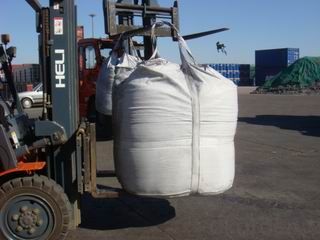
We can supply below furnace charges, please feel free to contact us if you areinterested in any of any of them:Coke (Metallurgical, foundry, gas)
Calcined Anthracite with fixed carbon from 90% to 95%
- Q:What are the problems that should be paid attention to in the injection molding of the material? Who has some details about carbon fiber injection? Thank you for sharing
- Carbon fiber melting point at about 3000 degrees (isolation oxygen, oxygen, about 400 degrees will be oxidized), itself can not be injection processing, only carbon fiber filled plastic can be injection molding.
- Q:What is carbon black ink?
- The main component of carbon black ink is carbon black pigment. Carbon black, a fine powder produced from carbon through incomplete combustion of hydrocarbons, is commonly used as a pigment in the ink industry due to its intense black color, excellent opacity, and resistance to UV rays. When it comes to applications, carbon black ink is widely utilized in printing, writing, and drawing. It can be found in ballpoint pens, fountain pens, markers, and printer inks. The ink's high concentration of carbon black pigment ensures a deep and solid black color on different surfaces, including paper. One of the advantages of carbon black ink is its durability. It has exceptional lightfastness, meaning it does not fade or change color when exposed to light over time. This is particularly crucial for applications that require long-lasting or archival-quality ink, such as art or document preservation. Moreover, carbon black ink exhibits good water resistance and adhesion properties, making it suitable for use on various materials like paper, cardboard, and plastics. Its high viscosity ensures consistent and smooth ink flow, allowing for precise and consistent writing or printing. In conclusion, carbon black ink is a versatile and reliable ink that offers an intense black color, excellent durability, and good adhesion properties. Its widespread use in various writing and printing applications showcases its quality and dependability.
- Q:How does carbon dioxide affect fuel efficiency?
- Carbon dioxide does not directly affect fuel efficiency. However, the burning of fossil fuels, which releases carbon dioxide, contributes to global warming and climate change. These environmental impacts can lead to stricter regulations on fuel efficiency and encourage the development of more efficient and cleaner energy sources.
- Q:How do human activities contribute to carbon emissions?
- Human activities contribute to carbon emissions in several ways. The burning of fossil fuels for electricity, transportation, and industry is one of the main sources of carbon dioxide emissions. When we burn coal, oil, or natural gas, carbon is released into the atmosphere. Additionally, deforestation and land-use changes also contribute to carbon emissions. Trees play a crucial role in absorbing carbon dioxide, so when forests are cleared for agriculture or urbanization, the stored carbon is released back into the atmosphere. Moreover, industrial processes such as cement production and chemical manufacturing also release carbon emissions. Finally, human activities like agriculture and livestock farming can produce methane, a potent greenhouse gas that contributes to global warming. Overall, our reliance on fossil fuels, deforestation, industrial processes, and certain agricultural practices all contribute to carbon emissions, exacerbating the problem of climate change.
- Q:What are the impacts of carbon emissions on the stability of river ecosystems?
- The stability of river ecosystems is significantly affected by carbon emissions, which have various consequences. One of the main outcomes of carbon emissions is the rise in greenhouse gases in the atmosphere, resulting in global warming. This increase in temperature directly and indirectly impacts river ecosystems. To begin with, higher temperatures can modify the physical characteristics of rivers and impact the availability of oxygen in the water. Warmer water holds less dissolved oxygen, which can be harmful to aquatic organisms like fish and invertebrates that depend on oxygen for survival. The decrease in oxygen levels can lead to a decrease in biodiversity and even cause fish to die. Furthermore, climate change caused by carbon emissions can disrupt the natural hydrological cycle. Changes in precipitation patterns can lead to droughts or floods, causing fluctuations in river flow. These alterations can affect the reproductive and migration patterns of many aquatic species, disturbing their life cycles and reducing their populations. Additionally, modified river flows can also affect the stability of riverbank and riparian habitats, resulting in erosion and habitat loss. Moreover, increased carbon emissions contribute to ocean acidification. When water absorbs carbon dioxide, it forms carbonic acid, which lowers the pH of the water. Acidic waters can have harmful effects on aquatic life, including shellfish, corals, and other organisms that calcify. River ecosystems are interconnected with coastal and marine ecosystems, so the consequences of ocean acidification can indirectly impact river ecosystems through the food chain. Furthermore, carbon emissions contribute to the deposition of air pollutants, such as nitrogen and sulfur compounds, onto land and water bodies. These pollutants can be carried by rainfall into rivers, leading to increased nutrient levels and eutrophication. Excessive nutrients can cause harmful algal blooms, deplete oxygen levels, and create dead zones, further disturbing the balance of river ecosystems. In conclusion, the stability of river ecosystems is profoundly impacted by carbon emissions. Rising temperatures, altered hydrological cycles, ocean acidification, and increased nutrient levels all contribute to the degradation of these ecosystems. It is essential to reduce carbon emissions and adopt sustainable practices to mitigate these impacts and preserve the health and stability of river ecosystems.
- Q:How to identify a laptop shell is carbon fiber
- Carbon fiber, as its name suggests, is made from carbon fiber, so there are several characteristics. First, if it is not colored, you can see the obvious fiber. Second is black carbon color. And it's a lot more than ABS.
- Q:What is carbon capture and storage?
- Carbon capture and storage (CCS) is a technology that aims to reduce carbon dioxide (CO2) emissions from industrial processes, power plants, and other significant sources. It involves capturing CO2 emissions before they are released into the atmosphere, transporting the captured CO2, and securely storing it underground. The process of carbon capture typically involves using specialized equipment to capture CO2 from flue gases or other industrial processes. This captured CO2 is then compressed and transported via pipelines or ships to a suitable storage site. The storage site is typically located deep underground, where the CO2 is injected into geological formations such as depleted oil and gas fields, saline aquifers, or deep coal seams. The storage of CO2 underground is done in a way that ensures its long-term containment and minimizes the risk of leakage. This can involve using various techniques, such as monitoring the storage site for any signs of leakage, ensuring the integrity of the storage infrastructure, and selecting suitable storage sites with geological features that contribute to the long-term containment of CO2. Carbon capture and storage has the potential to significantly reduce CO2 emissions and help mitigate climate change. By capturing and storing CO2 rather than releasing it into the atmosphere, the technology allows industries to continue using fossil fuels while minimizing their environmental impact. It can be particularly beneficial for industries that are difficult to decarbonize, such as cement production, steel manufacturing, and natural gas power plants. While carbon capture and storage is a promising technology, there are still challenges and limitations to its widespread deployment. One major challenge is the high cost associated with implementing CCS infrastructure and operations. Additionally, finding suitable storage sites and addressing public concerns about the safety and environmental impact of injecting CO2 underground can also pose significant obstacles. Despite these challenges, carbon capture and storage is considered an essential tool in the fight against climate change. It can play a crucial role in achieving global emission reduction targets and transitioning to a low-carbon economy. As technology continues to advance and costs decrease, the widespread adoption of carbon capture and storage may become increasingly feasible and necessary.
- Q:How does carbon dioxide affect the formation of smog?
- Carbon dioxide (CO2) does not directly contribute to the formation of smog. Smog is primarily formed by the interaction of sunlight with other pollutants such as nitrogen oxides (NOx) and volatile organic compounds (VOCs). These pollutants are emitted from various sources including vehicles, industrial processes, and power plants. However, while carbon dioxide does not directly participate in smog formation, it does play a significant role in contributing to climate change. CO2 is a greenhouse gas, meaning it traps heat in the Earth's atmosphere and contributes to the warming of the planet. As the Earth warms, it can lead to changes in weather patterns, resulting in more stagnant air conditions that can exacerbate smog formation. Additionally, the burning of fossil fuels, which releases carbon dioxide, is a major source of air pollutants like NOx and VOCs. So while CO2 itself may not directly contribute to smog formation, the activities that release CO2 can indirectly contribute to smog by releasing other pollutants that are involved in its formation. Therefore, the impact of carbon dioxide on smog formation is indirect, primarily through its contribution to climate change and the release of other pollutants. Reducing carbon dioxide emissions and transitioning to cleaner energy sources can help mitigate climate change and indirectly reduce the factors that contribute to smog formation.
- Q:What are the properties of carbon-based ceramics?
- Carbon-based ceramics, also known as carbon ceramics, are a unique class of materials with a combination of properties that make them highly desirable for various applications. These properties include: 1. High temperature resistance: Carbon-based ceramics exhibit exceptional thermal stability, allowing them to withstand extremely high temperatures without undergoing significant degradation or structural changes. This property makes them ideal for use in high-temperature environments such as aerospace components, brake systems, and heat shields. 2. Low density: Carbon ceramics are characterized by their low density, which contributes to their lightweight nature. This property is advantageous in applications where weight reduction is critical, such as in the automotive and aerospace industries, as it can enhance fuel efficiency and improve overall performance. 3. High hardness and wear resistance: Carbon-based ceramics possess exceptional hardness and wear resistance, making them highly durable and capable of withstanding abrasive forces. This property makes them suitable for use in cutting tools, bearings, and other applications where resistance to wear and erosion is required. 4. Excellent chemical resistance: Carbon ceramics are known for their excellent chemical resistance, which allows them to resist corrosion and degradation when exposed to various aggressive chemical environments. This property makes them valuable in chemical processing, semiconductor manufacturing, and other industries where resistance to chemical attack is crucial. 5. Good electrical conductivity: Unlike traditional ceramics, carbon-based ceramics exhibit good electrical conductivity due to the presence of carbon in their composition. This property makes them useful in applications that require both thermal insulation and electrical conductivity, such as heating elements, electrodes, and electronic components. 6. Tailorable properties: Carbon ceramics offer the advantage of being able to tailor their properties to specific requirements by varying the composition and processing methods. By adjusting factors such as carbon content, porosity, and microstructure, the mechanical, thermal, and electrical properties of carbon ceramics can be customized to meet specific application needs. In summary, carbon-based ceramics possess a unique combination of properties, including high temperature resistance, low density, high hardness, excellent chemical resistance, good electrical conductivity, and the ability to tailor their properties. These properties make them valuable materials in a wide range of industries, including aerospace, automotive, chemical processing, and electronics.
- Q:How is carbon used in the production of lubricants?
- Carbon is used in the production of lubricants in several ways. One of the primary uses of carbon in lubricant production is as a base oil. Carbon-based molecules such as mineral oils, synthetic oils, and vegetable oils serve as the main component of lubricants. These oils are derived from crude oil or synthesized from other carbon-rich compounds. The carbon atoms in the base oil form long chains or rings, which provide excellent lubricating properties. These carbon chains or rings have a high viscosity, which reduces friction between moving parts. This helps to minimize wear and tear, heat generation, and energy loss in various mechanical systems. Carbon is also used in the production of additives for lubricants. These additives are incorporated into the base oil to enhance its performance and provide additional benefits. For example, carbon-based additives such as graphite and molybdenum disulfide can provide superior lubrication under extreme pressures and temperatures. They form a protective layer on the surface of moving parts, reducing friction and preventing metal-to-metal contact. Furthermore, carbon-based additives can also improve the oxidation resistance and anti-wear properties of lubricants. By incorporating carbon molecules with specific functional groups, lubricants gain the ability to form a protective film on metal surfaces, preventing corrosion and extending the lifespan of the machinery. In summary, carbon is a crucial element in the production of lubricants. It serves as the base oil, providing viscosity and lubricating properties, as well as an additive to enhance performance and protect machinery. Without carbon, the production of effective lubricants would not be possible.
1. Manufacturer Overview |
|
|---|---|
| Location | |
| Year Established | |
| Annual Output Value | |
| Main Markets | |
| Company Certifications | |
2. Manufacturer Certificates |
|
|---|---|
| a) Certification Name | |
| Range | |
| Reference | |
| Validity Period | |
3. Manufacturer Capability |
|
|---|---|
| a)Trade Capacity | |
| Nearest Port | |
| Export Percentage | |
| No.of Employees in Trade Department | |
| Language Spoken: | |
| b)Factory Information | |
| Factory Size: | |
| No. of Production Lines | |
| Contract Manufacturing | |
| Product Price Range | |
Send your message to us
FC 93% Calcined Anthracite
- Loading Port:
- China Main Port
- Payment Terms:
- TT or LC
- Min Order Qty:
- 20 m.t.
- Supply Capability:
- 1000 m.t./month
OKorder Service Pledge
OKorder Financial Service
Similar products
New products
Hot products
Hot Searches






